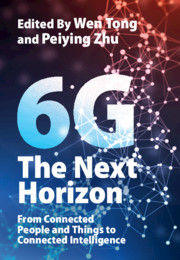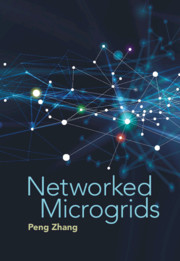Refine listing
Actions for selected content:
9096 results in Communications, Signal Processing and Information Theory

6G: The Next Horizon
- From Connected People and Things to Connected Intelligence
-
- Published online:
- 30 April 2021
- Print publication:
- 06 May 2021
Copyright page
-
- Book:
- Automotive Ethernet
- Published online:
- 06 April 2021
- Print publication:
- 22 April 2021, pp iv-iv
-
- Chapter
- Export citation
Index
-
- Book:
- Automotive Ethernet
- Published online:
- 06 April 2021
- Print publication:
- 22 April 2021, pp 362-368
-
- Chapter
- Export citation
Preface to the Third Edition
-
- Book:
- Automotive Ethernet
- Published online:
- 06 April 2021
- Print publication:
- 22 April 2021, pp ix-x
-
- Chapter
- Export citation
Preface to the First Edition
-
- Book:
- Automotive Ethernet
- Published online:
- 06 April 2021
- Print publication:
- 22 April 2021, pp xv-xvi
-
- Chapter
- Export citation
Timeline
-
- Book:
- Automotive Ethernet
- Published online:
- 06 April 2021
- Print publication:
- 22 April 2021, pp xxxi-xlviii
-
- Chapter
- Export citation
9 - Outlook
-
- Book:
- Automotive Ethernet
- Published online:
- 06 April 2021
- Print publication:
- 22 April 2021, pp 351-361
-
- Chapter
- Export citation
3 - A Brief History of Automotive Ethernet
-
- Book:
- Automotive Ethernet
- Published online:
- 06 April 2021
- Print publication:
- 22 April 2021, pp 75-108
-
- Chapter
- Export citation
2 - A Brief History of In-Vehicle Networking
-
- Book:
- Automotive Ethernet
- Published online:
- 06 April 2021
- Print publication:
- 22 April 2021, pp 33-74
-
- Chapter
- Export citation
Abbreviations and Glossary
-
- Book:
- Automotive Ethernet
- Published online:
- 06 April 2021
- Print publication:
- 22 April 2021, pp xvii-xxx
-
- Chapter
- Export citation
6 - Automotive Ethernet and Power Supply
-
- Book:
- Automotive Ethernet
- Published online:
- 06 April 2021
- Print publication:
- 22 April 2021, pp 227-246
-
- Chapter
- Export citation
8 - Ethernet in Automotive System Development
-
- Book:
- Automotive Ethernet
- Published online:
- 06 April 2021
- Print publication:
- 22 April 2021, pp 315-350
-
- Chapter
- Export citation
7 - Protocols for Automotive Ethernet
-
- Book:
- Automotive Ethernet
- Published online:
- 06 April 2021
- Print publication:
- 22 April 2021, pp 247-314
-
- Chapter
- Export citation
4 - The Automotive Environment
-
- Book:
- Automotive Ethernet
- Published online:
- 06 April 2021
- Print publication:
- 22 April 2021, pp 109-133
-
- Chapter
- Export citation
5 - Automotive Physical Layer Technologies
-
- Book:
- Automotive Ethernet
- Published online:
- 06 April 2021
- Print publication:
- 22 April 2021, pp 134-226
-
- Chapter
- Export citation
1 - A Brief History of Ethernet (from a Car Manufacturer’s Perspective)
-
- Book:
- Automotive Ethernet
- Published online:
- 06 April 2021
- Print publication:
- 22 April 2021, pp 1-32
-
- Chapter
- Export citation
Contents
-
- Book:
- Automotive Ethernet
- Published online:
- 06 April 2021
- Print publication:
- 22 April 2021, pp v-viii
-
- Chapter
- Export citation
Preface to the Second Edition
-
- Book:
- Automotive Ethernet
- Published online:
- 06 April 2021
- Print publication:
- 22 April 2021, pp xi-xiv
-
- Chapter
- Export citation

Networked Microgrids
-
- Published online:
- 15 April 2021
- Print publication:
- 06 May 2021
6 - IoT Processing Topologies and Types
-
- Book:
- Introduction to IoT
- Published online:
- 09 January 2021
- Print publication:
- 15 April 2021, pp 115-127
-
- Chapter
- Export citation
